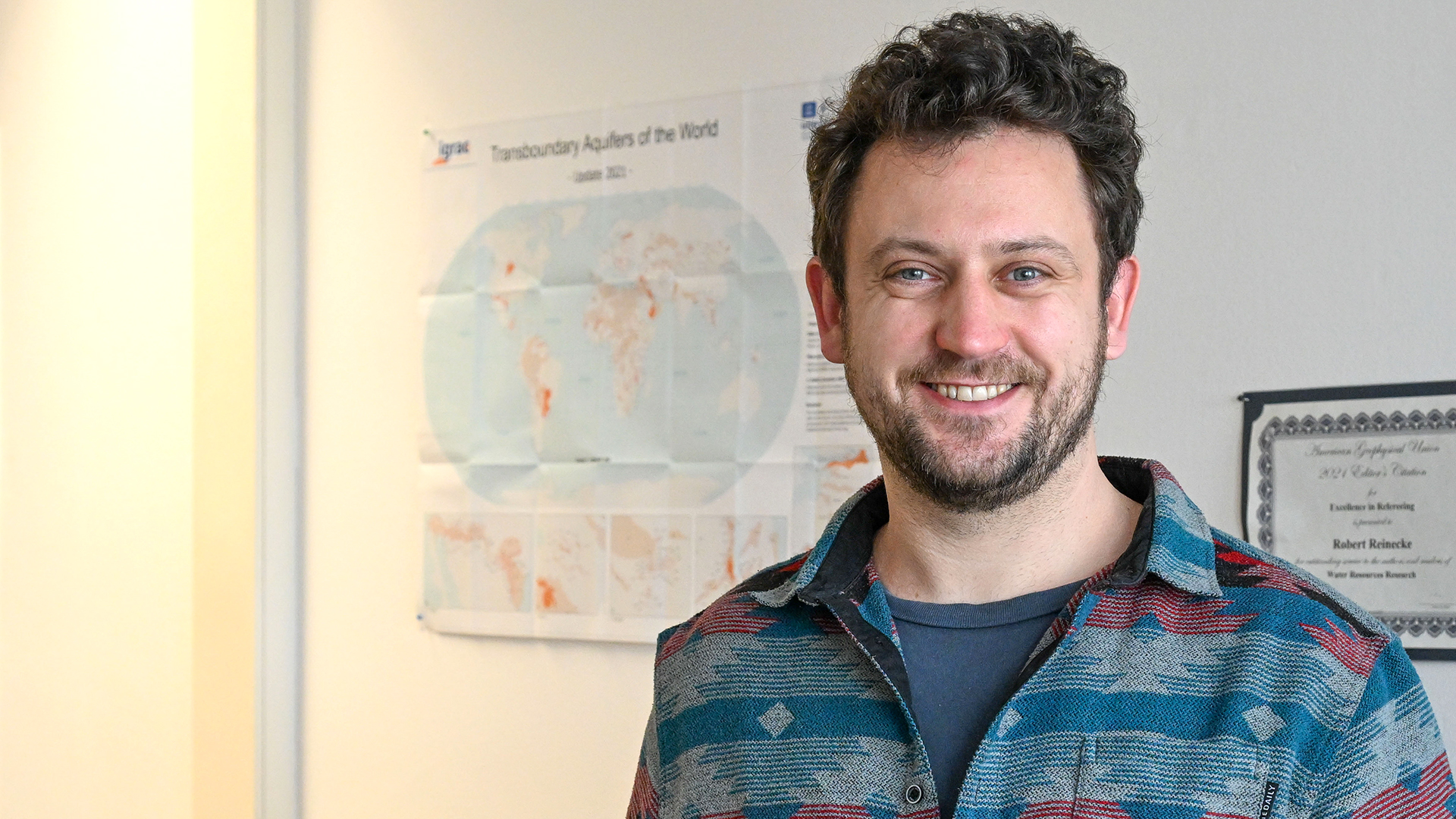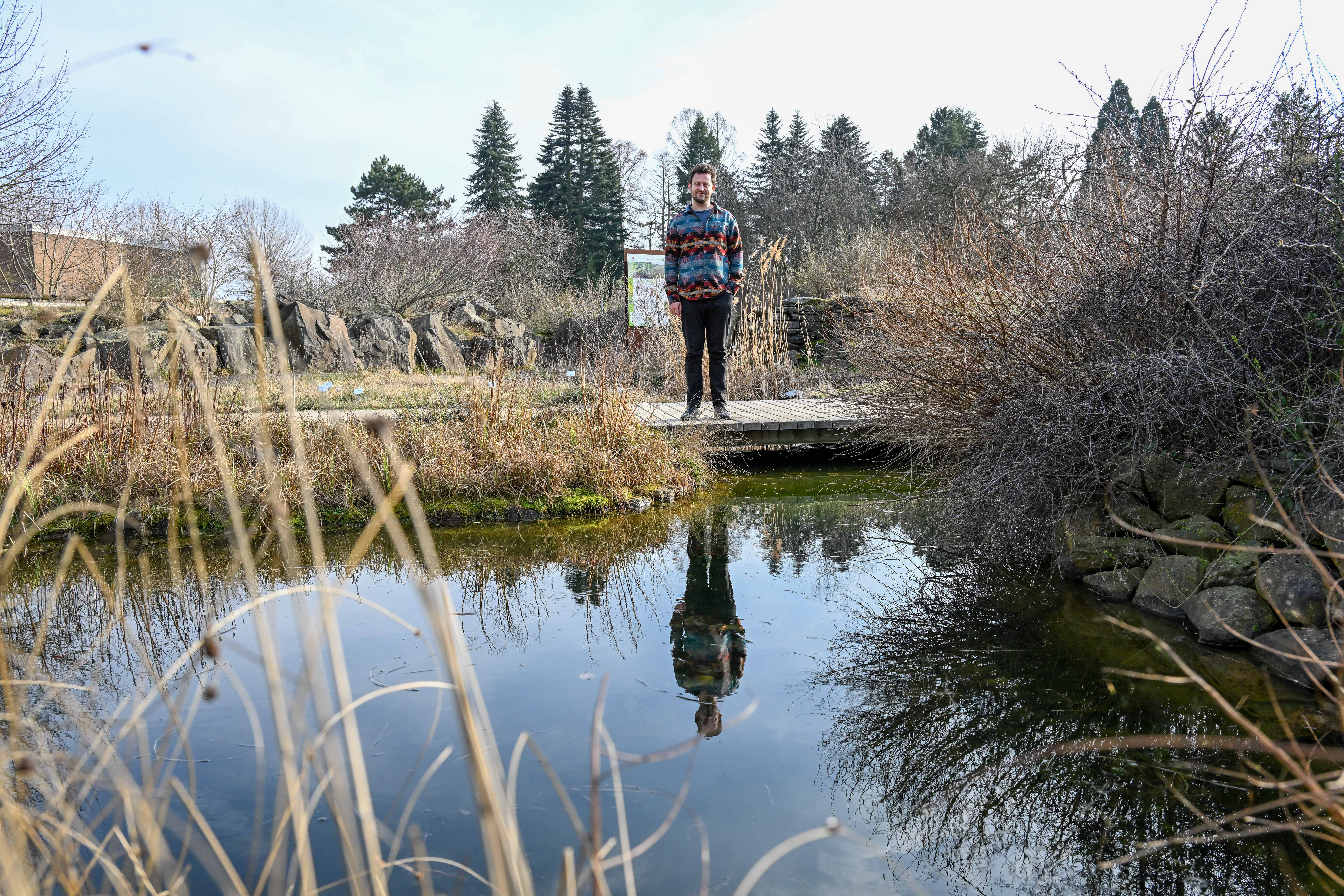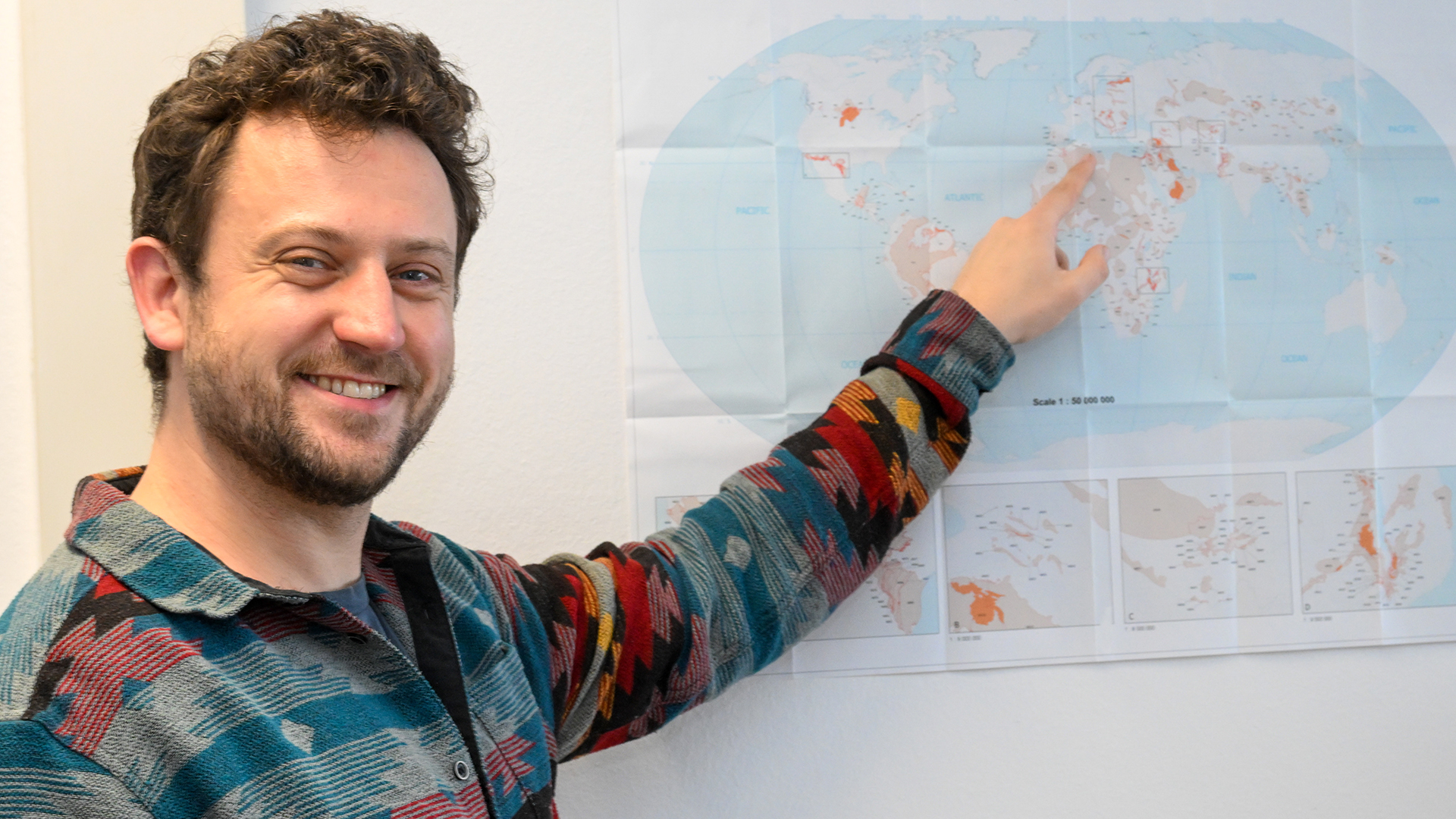17 April 2024
Groundwater, a dynamic system involved in multiple interactions, is a global concern. Professor Robert Reinecke of Mainz University, through his digital models of global water resources, is making a significant impact on our understanding of this crucial resource. His contributions to the annual United Nations' State of Global Water Resources report, published by the World Meteorological Organization (WMO), are shaping the global discourse on water management.
"We need to understand water to understand climate change," says Professor Robert Reinecke. The interaction between water and climate is just one facet of the complex study of global groundwater resources, a field that the 35-year-old researcher at the Institute of Geography of Johannes Gutenberg University Mainz (JGU) finds particularly fascinating. Water's diversity, from its various forms and locations to its role as a habitat, resource, and cultural phenomenon, is a source of endless intrigue for Reinecke, who has been appointed to a junior professorship in Earth System Modeling at JGU in 2023.

This year's World Water Day of the UN on March 22nd emphasized the global significance of water for the world at large. The World Water Day has been held every year since 1993 with a different focus. In 2024, the theme was Water for Peace, with the spotlight on the political dimension of water and the critical role water plays in the stability and prosperity of the world. Another more recently initiated UN project with considerable political and scientific implications is the State of the Global Water Resources report issued by the World Meteorological Organization (WMO). It first appeared in 2022, covering the year 2021, and has been published annually since then. Professor Robert Reinecke made major contributions to the first two reports and is also engaged in working on the third report in the series.
Global climate observations
The report presents information on global water resources and their dynamic changes over an observation period of 30 years to 12 months before the year of publication. And it takes much more than a purely descriptive approach. The WMO considers it essential not only to collate the results of global climate observations but also to assess these critically. Thus, the WMO report draws a very clear picture of the current situation: "The hydrological cycle is becoming out of balance as a result of climate change and human activities." This was the core finding of the second report that came out in 2023.
The World Meteorological Organization is one of the oldest agencies of the United Nations. The WMO Convention establishing it in its present form was adopted in 1947 and came into force in 1950. However, the origins of the WMO go way back to the International Meteorological Organization, founded in the 1870s. Reinecke forged close contacts with the WMO four years ago: "This was a result of my work for the UNESCO International Center for Water Resources and Global Change in Koblenz as well as of the excellent networking in the global modeling community," says Reinecke. "And it all came to pass because reports like this need digital modeling." The most important tools employed by Reinecke, who was born in Mainz and grew up in the area, are software and the powerful server racks run at the Gutenberg Campus.

All models are based on information collected using conventional methods and satellite data. "We don't take measurements ourselves, but we use the data to make our models work," Reinecke explains. The construction of a digital model begins with a so-called perceptional model, transforming the processes defined therein into mathematical formulas and then into efficient computational code. While developing these complex systems, the researchers regularly verify that the results of the model correspond with natural observations. This results in potent tools, such as the model of the Earth's groundwater resources that Reinecke works with.
Digital labs
The challenge for global models of this kind is that they should demonstrate the hydrological relationships worldwide as comprehensively as possible without going into too much detail. As Reinecke clarifies, it is vital to ensure that the vast volume of data is manageable because the model's primary purpose is to gain insights by simulating the impacts of possible future climatic and ecological changes. For Robert Reinecke, the complexity of these models makes them "essentially digital laboratories," neither "crystal balls nor prognostic machines." Geographical field research, for example, cannot be replaced entirely by digital modeling, even in the future. However, the UN's State of Global Water Resources report underlines the value of predictions generated with the help of digital methods.
Reinecke has long kept company with water, also in his leisure time. As a water sports enthusiast, he regularly travels by boat, be it in the Netherlands or Scotland. This year, he plans to test the waters of Norway. After studying computer science at Darmstadt, Reinecke completed his doctorate at Goethe University Frankfurt with a dissertation on the digital modeling of water. He then spent time in arid inland California before moving to Brandenburg in northeastern Germany, an area that is also very dry in the summer. There he became aware of the long-term effects of the over-exploitation of groundwater. "This problem is particularly acute in California," Reinecke adds. "I talked to farmers there whose next generation will have no groundwater left."

California may be a long way from Germany, but the twin challenges represented by the overuse of groundwater resources and climate change are also faced here. Reinecke points to reports in the German media about levels of groundwater having been replenished thanks to a very wet winter. But it would be wrong to interpret this as long-term alleviation of the predicament. The climate in Germany is trending towards hotter and drier summers. Isolated heavy rainfall events will not be sufficient to adequately replenish the aquifers. Reinecke spells it out: "This means that even in Germany, where we are used to an abundance of water, we need to think about how we use this resource in the future."
A complex system
As far as the specialist in earth system modeling is concerned, the starting point is our understanding of what groundwater really is. "Many people seem to imagine that groundwater is a sort of river flowing beneath the earth that you can directly tap into," he says. Instead, we need to conceive of it as a complex system of depots and currents that are linked with many other systems. This hydrological interlinking is the reason why a country like Germany can supply 70 percent of its drinking water requirements from groundwater. And it is this water stored underground that contributes to ensuring that rivers do not run dry during hot summers.
Professor Robert Reinecke proposes employing the cultural aspects of water to engender greater public appreciation of groundwater and its interdependencies. "We mainly think of water as a resource for ourselves, but we often forget that groundwater is also a habitat for various animals and plants," he emphasizes. Reinecke is optimistic with regard to the way science is approaching the topic. Interest in the subject of hydrology is growing and the capabilities of modeling are becoming increasingly acknowledged. However, there also needs to be a more discriminating discussion of the technology available, namely of "what computer models can do and what their limitations are."
In his teaching at JGU, Reinecke does not solely concentrate on the digital dimensions of water research but also employs more traditional forms of illustration: "I'm a big fan of maps, including those printed on paper," he says, referring to his lecture on cartography.
Text / Translation: Peter Thomas / JGU
